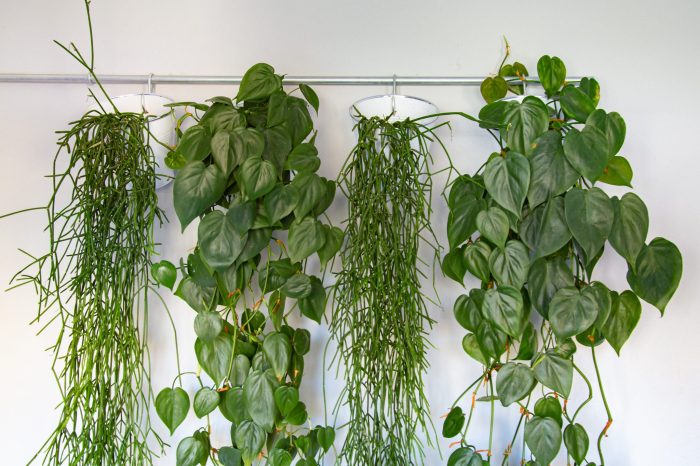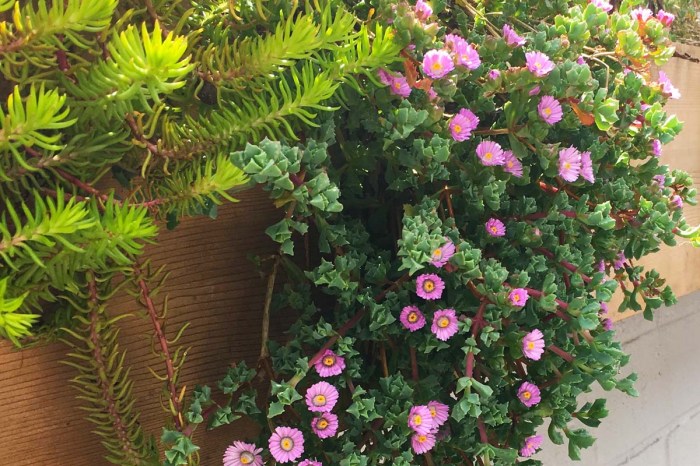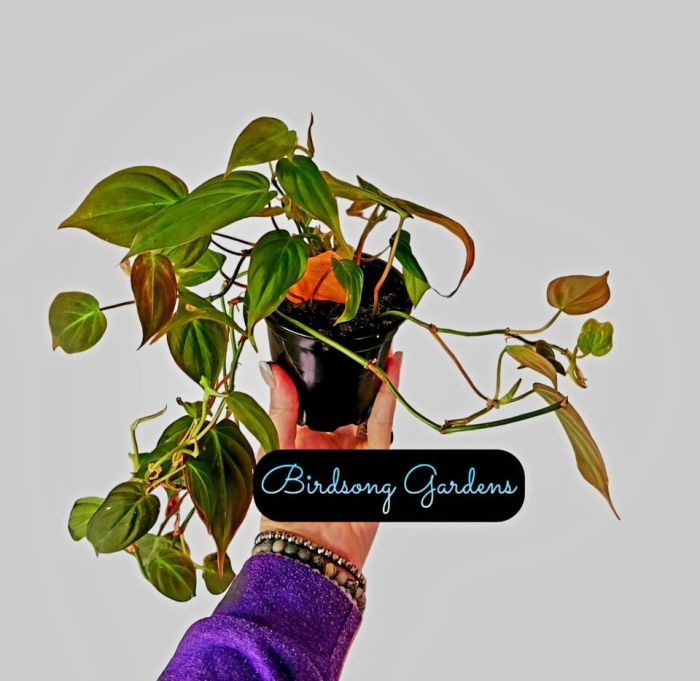Live trailing plants, with their cascading greenery and air-purifying qualities, bring a touch of nature’s beauty into your home, creating a serene and inviting atmosphere.
From elegant pothos to vibrant spider plants, these versatile plants offer a wide range of options to suit any decor style and living space.
Overview of Live Trailing Plants

Live trailing plants, characterized by their cascading foliage and long, trailing stems, are a popular choice for adding a touch of greenery and elegance to indoor and outdoor spaces. These versatile plants offer numerous benefits, including air purification, improved aesthetics, and a sense of tranquility.
Live trailing plants are an excellent choice for adding greenery to any space. They can be used to create a lush, cascading effect or to simply add a touch of nature to a room. If you’re looking for a way to add some life to your home, Hanging Plants are a great option.
They come in a variety of shapes and sizes, so you’re sure to find one that fits your needs. Plus, they’re relatively easy to care for, making them a great choice for even the busiest of people. With a little care and attention, live trailing plants can thrive for years to come, adding beauty and freshness to your home.
Live trailing plants come in a wide variety of species, each with its unique characteristics and growth habits. Some common types include:
Types of Live Trailing Plants
- Pothos (Epipremnum aureum):Known for its heart-shaped leaves and easy maintenance.
- Spider Plant (Chlorophytum comosum):Produces long, trailing stems with small, spider-like plantlets.
- String of Pearls (Senecio rowleyanus):Features delicate, bead-like leaves that resemble strings of pearls.
- Burro’s Tail (Sedum morganianum):Characterized by plump, fleshy leaves that resemble a donkey’s tail.
- Creeping Jenny (Lysimachia nummularia):A groundcover with round, green leaves and trailing stems.
Growing and Caring for Live Trailing Plants
Live trailing plants are popular for their versatility and ease of care. They can add a touch of greenery to any space, and they’re relatively low-maintenance. Here are some tips on how to plant and care for live trailing plants:
Light Requirements
Most live trailing plants prefer bright, indirect light. However, some varieties can tolerate low light conditions. If you’re not sure how much light your plant needs, it’s best to err on the side of caution and give it more light than less.
Water Requirements
Live trailing plants should be watered regularly, but they should not be allowed to sit in water. Allow the soil to dry out slightly between waterings. Overwatering can lead to root rot, which can kill the plant.
Soil Requirements
Live trailing plants prefer well-drained soil. A potting mix that is specifically designed for trailing plants is a good option. You can also make your own potting mix by combining equal parts peat moss, perlite, and vermiculite.
Live trailing plants are a beautiful way to add life and greenery to your home. They can be used to create a variety of looks, from lush hanging gardens to cascading waterfalls of plants. If you’re looking for the best plants for hanging baskets indoors, there are a few things to keep in mind.
First, you’ll want to choose plants that are well-suited to indoor conditions. Second, you’ll want to choose plants that have trailing growth habits. And finally, you’ll want to choose plants that are easy to care for. For more information on the best plants for hanging baskets indoors, click here . Live trailing plants are a great way to add beauty and style to your home, and they’re also a great way to improve your indoor air quality.
Fertilizing
Live trailing plants should be fertilized every few weeks during the growing season. Use a balanced fertilizer that is diluted to half strength.
Pruning
Live trailing plants can be pruned to control their growth. Pruning also encourages new growth, which can make the plant look fuller and healthier.
Propagation
Live trailing plants can be propagated by stem cuttings. To take a stem cutting, cut a 4-6 inch piece of stem from a healthy plant. Remove the leaves from the bottom of the cutting and then plant the cutting in a pot filled with moist potting mix.
Keep the potting mix moist and place the pot in a warm, sunny location. The cutting should root in 2-3 weeks.
Design Ideas with Live Trailing Plants
Live trailing plants offer versatile design options, adding greenery and visual interest to both indoor and outdoor spaces. Their cascading foliage creates a sense of movement and can be used to soften architectural lines, enhance privacy, or create a focal point.
From hanging baskets to window boxes and trellises, there are numerous ways to display live trailing plants. These plants can be incorporated into various room designs, from traditional to contemporary, adding a touch of nature and freshness to any space.
Hanging Baskets
Hanging baskets are a classic way to display trailing plants, creating a lush and eye-catching effect. They can be suspended from ceilings, porches, or balconies, adding a vertical element to the design. Trailing plants like ivy, ferns, and petunias are excellent choices for hanging baskets, as their cascading foliage creates a beautiful waterfall-like effect.
Window Boxes
Window boxes are another popular way to showcase live trailing plants, especially in urban environments. They can be attached to windowsills or railings, providing a splash of greenery and color to the exterior of buildings. Trailing plants like lobelia, nasturtiums, and verbena are well-suited for window boxes, as they produce vibrant blooms and can tolerate partial shade.
Trellises
Trellises are vertical structures that provide support for climbing plants, allowing them to grow upwards and create a green wall or screen. Trailing plants like clematis, honeysuckle, and morning glory can be trained to climb trellises, adding height and dimension to gardens and outdoor spaces.
They can also be used to create privacy screens or divide different areas of a garden.
Benefits of Live Trailing Plants

Live trailing plants are gaining popularity due to their aesthetic appeal and numerous health benefits. These plants possess air-purifying qualities, helping to remove harmful toxins from the air, improving indoor air quality. Studies have shown that plants like the spider plant and peace lily can effectively reduce levels of formaldehyde, benzene, and trichloroethylene, common pollutants found in homes.
Stress Reduction and Mood Enhancement
In addition to air purification, live trailing plants have been linked to stress reduction and mood enhancement. The presence of plants in the home has been shown to lower cortisol levels, the hormone associated with stress, and increase serotonin levels, which promotes relaxation and happiness.
A study published in the journal “Environmental Health Perspectives” found that exposure to plants can reduce psychological stress and improve cognitive function.
Troubleshooting Common Problems with Live Trailing Plants

Maintaining live trailing plants can present occasional challenges. Identifying and addressing these issues promptly is crucial for ensuring the plants’ health and aesthetic appeal. Common problems may include yellowing leaves, pest infestations, and overwatering. Understanding the causes and implementing effective remedies can help prevent and resolve these issues.
Yellowing Leaves
Yellowing leaves on trailing plants can indicate various underlying problems. Nutrient deficiencies, such as a lack of nitrogen or iron, can cause yellowing. Ensure adequate fertilization and use a balanced plant food to provide essential nutrients. Overwatering can also lead to yellowing leaves due to root rot.
Allow the soil to dry out slightly between waterings to prevent this issue.
Live trailing plants add a touch of greenery and vibrancy to any indoor space. For those seeking a low-maintenance solution, self watering indoor wall planters offer an innovative way to display live trailing plants. These planters feature a reservoir that automatically waters the plants, making them ideal for busy individuals or those who may forget to water their plants regularly.
With self watering indoor wall planters, you can enjoy the beauty of live trailing plants without the hassle of frequent watering.
Pests, Live trailing plants
Trailing plants can be susceptible to pests such as aphids, mealybugs, and spider mites. These pests feed on plant sap, causing damage to leaves and stems. Inspect plants regularly for signs of pests and treat promptly with appropriate insecticides. Natural remedies like neem oil or insecticidal soap can be effective in controlling pest infestations.
Overwatering
Overwatering is a common problem that can lead to root rot and yellowing leaves. Avoid overwatering by allowing the soil to dry out slightly between waterings. Ensure proper drainage by using well-draining soil and a pot with drainage holes. Consider using a moisture meter to determine when the soil is dry enough to water.
Live trailing plants are a beautiful and versatile way to add greenery to your home. They can be hung from ceilings, walls, or shelves, and their long, flowing vines can create a dramatic effect. If you’re looking for a more permanent solution, consider real indoor hanging plants . These plants are specifically bred to thrive in indoor conditions, and they come in a variety of shapes and sizes to suit any space.
With a little care and attention, live trailing plants can add beauty and life to your home for years to come.
Summary
Whether you’re a seasoned plant enthusiast or just starting your green journey, live trailing plants are an easy and rewarding way to add life, color, and a touch of tranquility to your living space.
Clarifying Questions
How much light do live trailing plants need?
Most live trailing plants prefer bright, indirect light, but some can tolerate low light conditions.
How often should I water live trailing plants?
Water when the soil feels dry to the touch, typically once or twice a week.
Can live trailing plants be propagated?
Yes, live trailing plants can be propagated easily through stem cuttings.